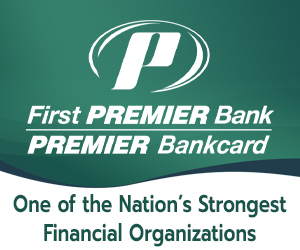
Focus on equity
Tips for investing in commercial real estate
Within the last 30 years or so, commercial real estate has joined the marketplace as an alternative asset class for individuals, or institutional investors to allocate capital. Stocks, bonds and cash have been engrained in society for decades prior to commercial real estate entering the mix, leading the long list of alternative asset classes.
What are some of the other alternative asset classes? That definition seems to expand monthly with the advent of cryptocurrency, NFTs and more, but traditionally commodities, collectibles, venture capital, operating companies or gold come to mind.
Owning commercial real estate has obvious benefits to most investors, including:
- Cash Flow – The amount of money you have left after rent received, paying expenses and your mortgage.
- Principal Reduction – Rather than coming out of your pocket as the owner/landlord, your principal is reduced annually by tenants.
- Income Tax Savings – Depreciation deductions, which shelter the cash flow and principal reduction.
- Appreciation – Always assume to be zero going in from an investment and lending perspective, but the reality is that over time most all property increases in value. This has been especially true in the last few years in industrial and multi-family properties in the Sioux Falls market.
These benefits are great, but what most investors don’t consider over the term of their hold on a commercial real estate investment property is the active equity stake they have in the investment. If you buy an asset for $1 million, it’s likely you’d be able to purchase that asset for $250,000 down (25% in most cases). Your initial equity of $250,000 should be used as a basis year one when considering your cash on cash. If that investment made sense 5, 10 or 15 years ago for $250,000 in equity, what is your equity telling you about your return on the investment today? Have you owned the property for too long and your depreciation deductions are no longer in play? Or have you considered where the market has taken your property value on an income or market comparable approach basis?
After a period of time, your investment will no longer tie to the initial equity you put down to acquire the property. Your investment is the amount of net proceeds you could receive if you sold the property today!
Let’s say that property you purchased ten years ago for $1 million is now worth $1.5 million, which is not out of the question for many assets in Sioux Falls. You likely still have a principal and interest payment, along with ongoing expenses. But if the property is worth $1.5 million and you could walk away from a sale with $750,000, your equity is no longer the $250,000 you initially put down. It’s the $750,000 you could receive and put into an alternative asset class mentioned above. In effect, by not choosing to sell the property, you are choosing to buy it (re-invest) for $750,000 this year. What would your return on investment look like based on an investment of $750,000 compared to $250,000?
The act of working your equity becomes crucial in this situation, and continuing the status quo is typically the fourth best option to consider among these three:
- Sell – A straight up sale is unlikely to benefit most owners as they will have to pay a large capital gains tax.
- Refinance – A common theme in the last 2-3 years in the market, especially with the historically low interest rates we’ve had. This seems to be the safest bet for investors in recent years but expect that to start to change if interest rates begin to climb.
- 1031 Exchange – This simple act of selling your property and deploying your equity into a like-kind asset allows you to avoid capital gains tax. In the last few years, we’ve had clients 1031 exchange out of farmland and into commercial real estate in Sioux Falls, as well as the exact opposite, clients exchange commercial real estate investment property into farmland. The motivation all depends on the individual’s place and timing in life, along with the associated risk tolerance.
Most of this perspective is framed from the angle of the individual or institutional investor, but similar principals should be applied from a business owner considering real estate ownership as well. Focusing on equity will lead you to consider where the best return on that equity is coming from. Does your operating business perform at a rate that is allowing you as the business owner a 10% or greater return? If so, it would likely not make sense to purchase real estate for your business to locate in because real estate typically returns in the 6%-8% range. Leasing would be a better alternative, allowing you to allocate more equity into your operating business, thus maximizing your return. Many business owners never run the numbers to show the better return on investment, but it might not be a bad practice to consider.
Regardless of which action you take – the act of fully understanding your equity basis in your commercial real estate investment property should be done on an annual basis with an experienced team of property management, accounting and brokerage advice.

Marcus Mahlen
Marcus Mahlen, CCIM, is senior vice president at NAI Sioux Falls. His expertise primarily involves investment sales and leasing in the retail, office and industrial asset classes.


